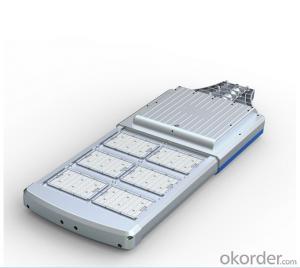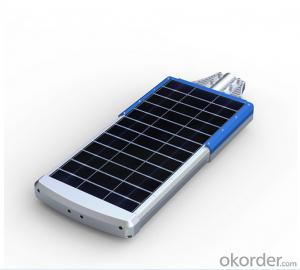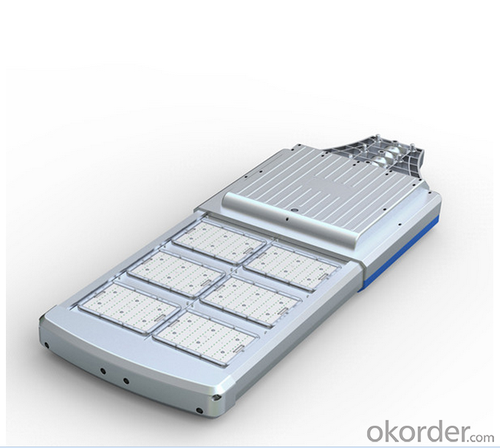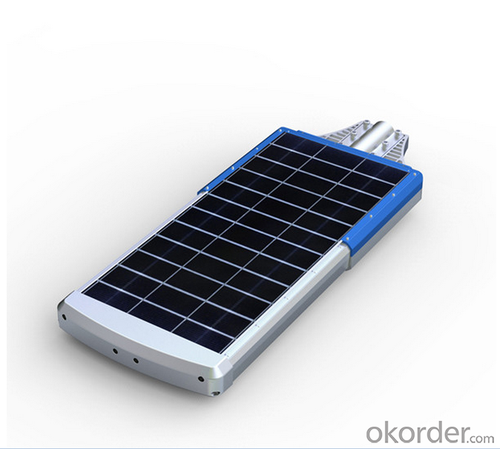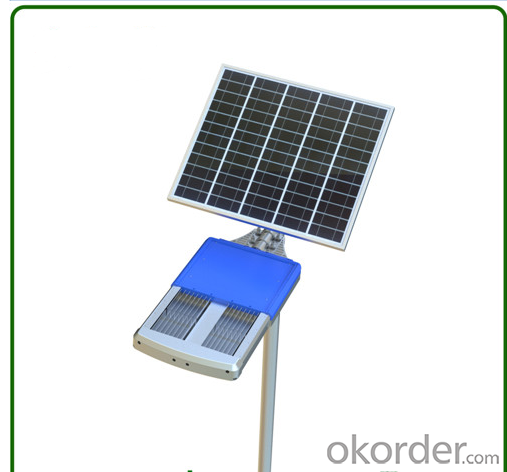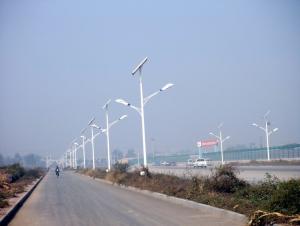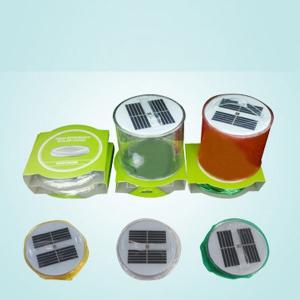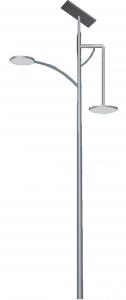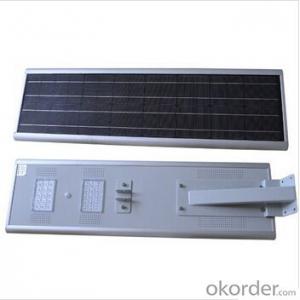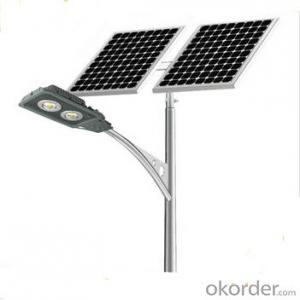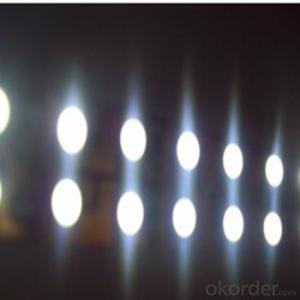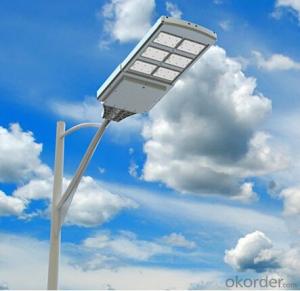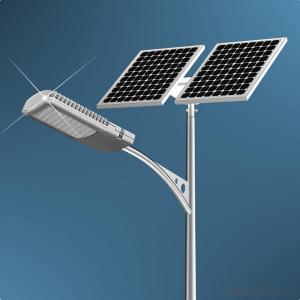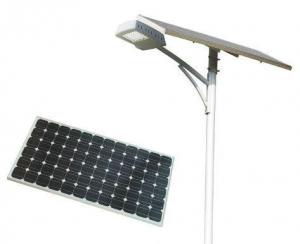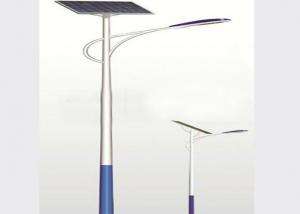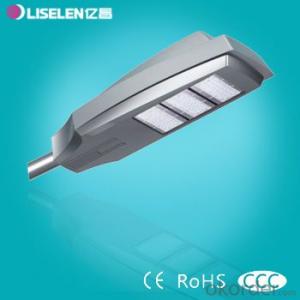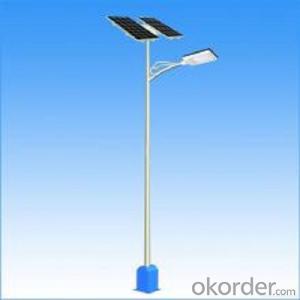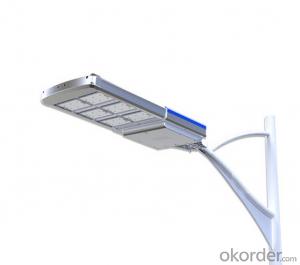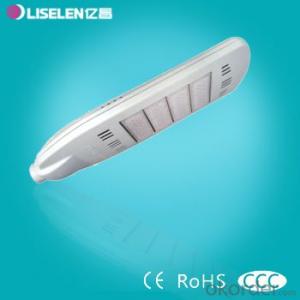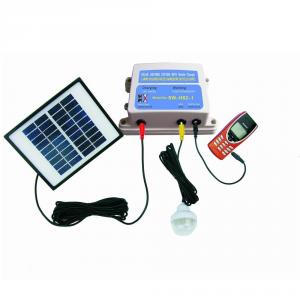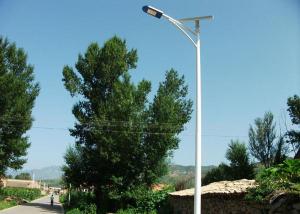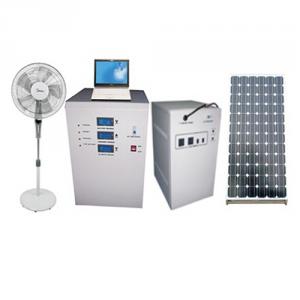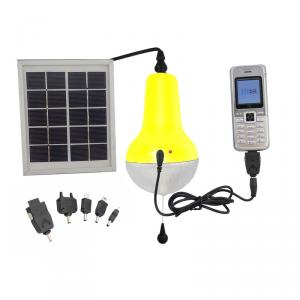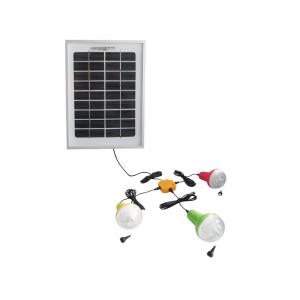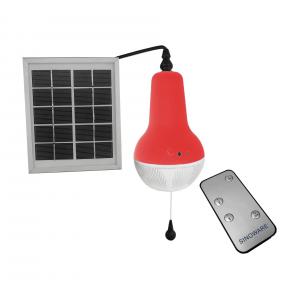Home Depot Solar Street LED Light - Environment Friendly
- Loading Port:
- China main port
- Payment Terms:
- TT OR LC
- Min Order Qty:
- 100 set
- Supply Capability:
- 10000 set/month
OKorder Service Pledge
OKorder Financial Service
You Might Also Like
Feature:
1. Elegant Integrated Design, Aluminum alloy case 2. Super bright LEDs, 4800Lumens 3. Every element can be easily replaced by users 4. Over 140°wide lighting angle 5. Support 3 nights lighting time 6. Easy to install
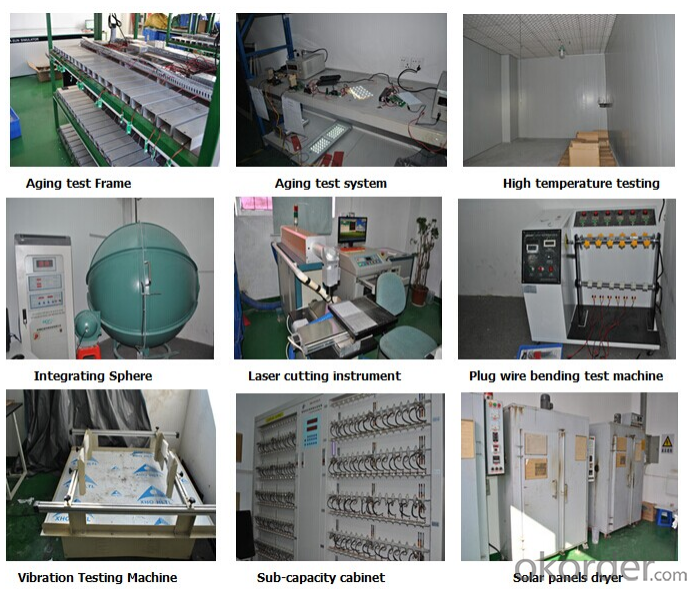
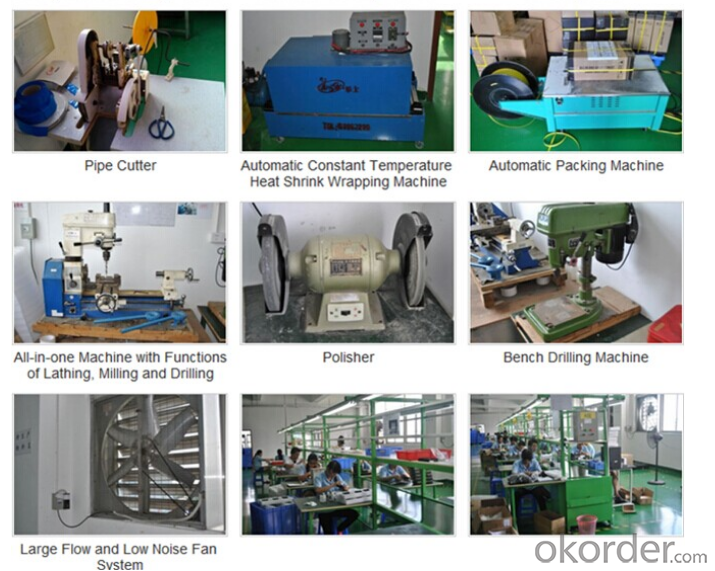
FAQ
1.How to install?
You can fix the product with the screw in the packing box and install the product on the area that needs illumination. Enough sunshine that can insolate the solar panel for charging has to be ensured. You have to pay attention that excellent effect of charging can be achieved when the solar panel has angle and no shelter and faces to the south area.
2.How to use and how to charge?
The product is off before delivery in order to avoid discharging during transportation. You can activate it by using the pin, take away the magnet, and face the solar panel to the sunlight or tearing off the film. This is depend on different item, the activate way may differ. Solar panel should be insolated with certain angle and charge in the daytime and bright automatically in the nighttime.
3.Dose the light illuminate in the daytime?
The light is optically controlled. It will not illuminate when there is enough light during the day. Once night falls, it will bright.
4.How is the effect of the PIR motion sensor?
The light will be in the energy saving mode when it is dark automatically, light will be off when it is dawn. With this characteristic, the light can be used as signal light, indicator light and continuous light.
PIR motion sensor light: Entering into the induction area when it is dark, the light will bright automatically and lasts for about 30 seconds, and then, it will turn to power saving mode.
Specification Solar panel Monocrystalline silicon,17% efficiency Battery Type Li-ion rechargeable battery LED 4800Lumens Solar charging time 10 hours by bright sunlight Lighting mode 5Hrs 100% light+ 25% light till dawn Lighting time Over 36 hours material Aluminum alloy+ABS Install height 6-8m Waterproof IP65 Work temperature -20℃ to 55℃ Product size 1092*488*117mm Application l Courtyard/Garden/ Park/Street/Roadway/ l Pathway/Parking Lot/Private road/Sidewalk/Public square/ l Plaza/Campus/Airfield/Farm & Ranch/Perimeter Security/ l Wildlife area/Remote Area/Military Base
- Q: Are solar lights compatible with existing electrical systems?
- No, solar lights are not compatible with existing electrical systems as they operate independently using solar panels to convert sunlight into electricity. They do not require any external electrical connections or power sources.
- Q: How do solar lights automatically turn on and off?
- Solar lights are equipped with a built-in mechanism that enables them to automatically switch on and off based on the surrounding light conditions. This mechanism, referred to as a light sensor or photocell, plays a crucial role in their operation. During daylight hours, the solar panel on the light absorbs sunlight and converts it into electrical energy. This energy is then stored in a rechargeable battery, typically located inside the light fixture. Simultaneously, the light sensor detects the presence of natural light. As evening approaches and the natural light begins to fade, the light sensor detects this change and triggers the light to activate. The stored electrical energy from the battery is utilized to power the LED bulbs within the light, effectively illuminating the surrounding area. Conversely, as the sun rises in the morning, the light sensor detects the increase in daylight and instructs the light to switch off. This action helps preserve the stored energy in the battery for use during the subsequent evening. In essence, solar lights effortlessly switch on and off by utilizing a light sensor that detects variations in natural light conditions. This efficient system allows them to effectively harness solar energy throughout the day and provide illumination as needed during the night.
- Q: What is the maintenance cost of solar lights?
- Compared to traditional lights that rely on electricity, solar lights have a relatively low maintenance cost. They are designed to be self-sustaining and need very little upkeep. The main tasks involved in maintaining solar lights are cleaning the solar panels to ensure they absorb energy efficiently and replacing the rechargeable batteries, which usually last for 2-3 years. It may also be necessary to check and tighten any loose connections or components to ensure everything works properly. However, in general, the maintenance cost of solar lights is much lower than the ongoing expenses associated with traditional lights, like electricity bills and frequent replacement of bulbs.
- Q: How do you determine the brightness level of solar lights?
- The brightness level of solar lights can typically be determined by checking the lumens rating. Lumens provide a measurement of the total amount of visible light emitted by the light source, therefore indicating its brightness level.
- Q: Do solar lights have adjustable brightness levels for energy conservation?
- Solar lights frequently come with adjustable brightness levels in order to conserve energy. A variety of lighting modes are available on many solar lights, giving users the ability to select the desired brightness level according to their requirements. Certain models offer a high brightness mode for optimal illumination, a low brightness mode for creating a pleasant atmosphere, and even a motion sensor mode that turns on the light only when motion is detected. By providing these adjustable brightness levels, users can opt for a lower brightness setting when full brightness is unnecessary, thus extending the solar light's operating time and decreasing its energy usage overall.
- Q: Can solar lights be used for illuminating outdoor seating areas?
- Yes, solar lights can definitely be used for illuminating outdoor seating areas. Solar lights are designed to harness energy from the sun and convert it into electricity to power the lights. They are typically equipped with a solar panel that absorbs sunlight during the day, which is then stored in a rechargeable battery. This stored energy is utilized to illuminate the lights during the night. Solar lights are particularly suitable for outdoor seating areas as they do not require any electrical wiring or access to a power source. This makes them easy to install and move around, providing flexibility in lighting up different areas of the outdoor space. Additionally, solar lights are eco-friendly and cost-effective since they rely on renewable energy from the sun. There are various types of solar lights available for outdoor use, including string lights, path lights, spotlights, and lanterns. Depending on the specific seating area and desired ambiance, different styles and brightness levels can be chosen. Some solar lights also come with motion sensors or timers for added convenience and energy efficiency. In conclusion, solar lights are a great option for illuminating outdoor seating areas. They provide a sustainable and hassle-free lighting solution while enhancing the overall aesthetics and functionality of the space.
- Q: How do solar lights handle power fluctuations caused by nearby industrial equipment?
- Solar lights are designed to handle power fluctuations caused by nearby industrial equipment quite effectively. One of the key features of solar lights is their ability to convert sunlight into electricity through photovoltaic panels. These panels are typically made up of multiple solar cells that absorb sunlight and generate a direct current (DC) electrical charge. In the event of power fluctuations caused by nearby industrial equipment, solar lights have built-in mechanisms to regulate and stabilize the power supply. Most solar lights are equipped with charge controllers, which help optimize the charging and discharging of the battery that stores the solar energy. These charge controllers are designed to protect the battery from overcharging and also ensure a consistent power supply to the light source. Additionally, solar lights often incorporate energy storage systems, such as rechargeable batteries, which store excess solar energy during the day for use during nighttime or periods of low sunlight. These batteries act as a buffer, providing a steady power supply to the light source even when there are fluctuations in the solar energy input. Moreover, some advanced solar lights may feature smart technologies that monitor and adjust the power output based on the surrounding conditions. These lights can automatically detect power fluctuations caused by nearby industrial equipment and adjust their power output accordingly to maintain a consistent lighting level. Overall, solar lights are designed to be resilient and adaptable to various environmental conditions, including power fluctuations caused by nearby industrial equipment. They utilize charge controllers, energy storage systems, and smart technologies to regulate and stabilize the power supply, ensuring reliable and consistent illumination.
- Q: Can solar lights be installed on walls?
- Yes, solar lights can be installed on walls. They are designed with mounting brackets that allow for easy installation on various surfaces, including walls.
- Q: Can a solar-charged watch be filled with a fluorescent lamp?
- Followed by monocrystalline silicon solar panels, and then is the polysilicon solar panels.
- Q: Can solar lights be used for illuminating outdoor wedding venues?
- Indeed, outdoor wedding venues can certainly benefit from the use of solar lights for illumination. These lights are not only well-liked but also eco-conscious options for outdoor lighting at weddings. By utilizing renewable energy from the sun, solar lights eliminate the need for electricity or wiring, making them a practical alternative for outdoor locations. They can be effortlessly installed in various spots, such as pathways, garden borders, trees, or even suspended from structures like gazebos or tents. With a wide range of styles, colors, and brightness levels available, couples can effortlessly create the desired ambiance for their special day. Moreover, solar lights often include built-in sensors that automatically activate at dusk and deactivate at dawn, ensuring effortless illumination throughout the evening. As a whole, solar lights offer versatility, cost-effectiveness, and environmental friendliness when lighting up outdoor wedding venues.
Send your message to us
Home Depot Solar Street LED Light - Environment Friendly
- Loading Port:
- China main port
- Payment Terms:
- TT OR LC
- Min Order Qty:
- 100 set
- Supply Capability:
- 10000 set/month
OKorder Service Pledge
OKorder Financial Service
Similar products
Hot products
Hot Searches
Related keywords
